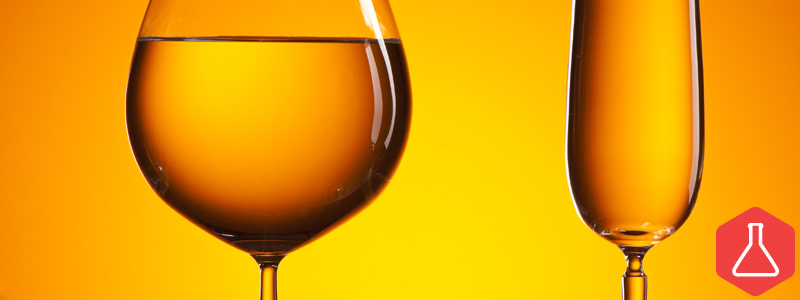Among the wine community, orange wine is all the rage. The traditional wine media loves it because it’s a “new” wine color. The wine geeks love it because it’s . . . well . . . geeky. But, while it’s exciting to try a cool new style of wine made in a really geeky way, there are a lot of confused regular people out there. You’ve heard about the trend and want to get in on it, but don’t know what you’re looking for, so let’s break it down.
To make red wine, red grapes are crushed and put into big vats so that yeast can be introduced to begin fermentation. We’ve discussed this process on VinePair before: during fermentation single celled yeast organisms feed off the natural sugar in the grape juice and covert it to alcohol. At the same time, maceration is taking place, a process during fermentation where the new wine is extracting pigments and other compounds from the skins, giving the wine its color. It’s a fun, exciting time in a winery during this phase of winemaking. All the hard work that was done in the vineyard to ensure the grapes were healthy — a necessity for great wine — is beginning to be realized.
To make white wine, as opposed to red, the white grapes are often crushed and then the juice is quickly separated from the skins, doing away with the potential for full-scale maceration. This means the color from the skins is only slightly imparted into the wine. Winemakers remove the skins quickly because the major compounds in the skins, such as tannin and color pigment, are considered undesirable, hence the separation.
Don't Miss A Drop
Get the latest in beer, wine, and cocktail culture sent straight to your inbox.But! Imagine a winemaker opting not to quickly separate the skins from the juice of his or her white wine grapes and instead begin the vinification process as they would a red wine, allowing the juice to continue to soak with the skins, extracting pigment and other compounds. Due to the extended skin contact, the result is a wine that is not necessarily white but more of an amber color, an “orange wine.”
However, even though orange wine is all the rage and seems super cool, here’s where it gets a little tricky, not all orange wines are good. One of the reasons why winemakers have historically removed skins from white wine so quickly is because the undesirable compounds mentioned above can affect the complexity of the wine and render it almost undrinkable. It takes a skilled winemaker to create a good orange wine where this doesn’t happen.
Orange wine should give you the same pleasure you get from drinking any red or white that is well made. The deep golden color should be balanced by a clean minerality swimming through soft, pleasant bitter aromas of dried pear, white flowers and a “kiss” of what the wine critics call orange pith. To simplify the flowery wine language, it should be a wine you actually enjoy drinking, plain and simple.
Orange wines are perfect with all kinds of food, from grilled meats such as lamb or pork loin, to seafood dishes like shrimp and pasta as well as filets. As always, you need to trust the person you are buying these geeky wines from. If you find yourself at a locale that has orange wine available, ask for an orange wine with less intensity to get you started and move on from there.

